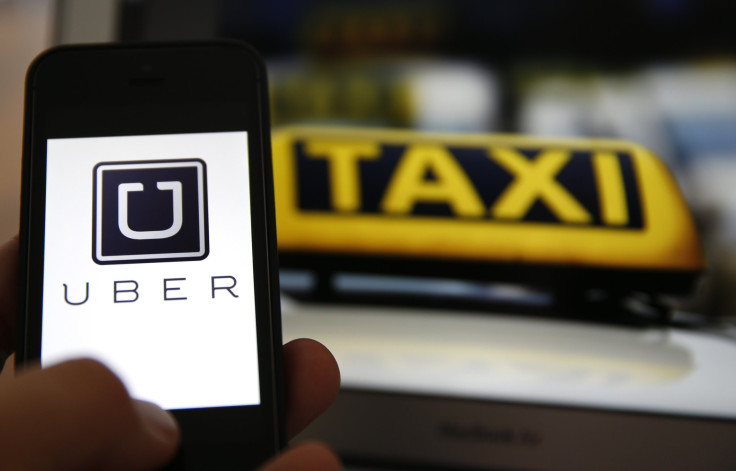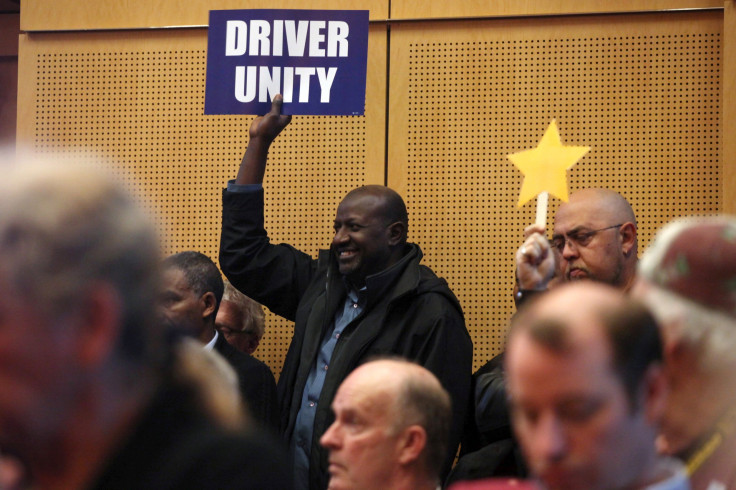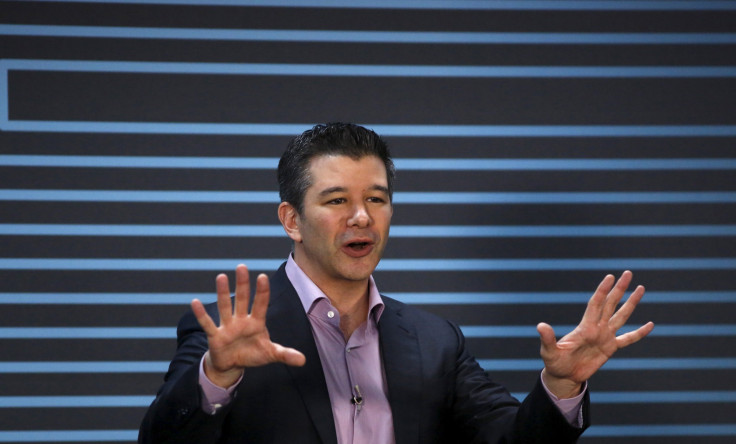Why The Uber, Lyft Driver Union Push Could Disrupt The Gig Economy

A revolution is brewing in the so-called gig economy: As independent contractors, most workers for apps like Uber and Lyft lack the sorts of basic rights afforded to much of the American labor force. That's going to change if a growing pack of legislators gets their way.
Earlier this week, the Seattle City Council voted to extend collective bargaining rights to drivers for the popular ride-hailing companies. Now, a California lawmaker is preparing to introduce a similar bill covering an even larger group of independent contractors -- not just those at Uber and Lyft, but workers for other popular on-demand platforms like TaskRabbit and Postmates.
“If you look at the foundations of minimum wage and the eight-hour day, if you look at the foundations of retirement security, a lot of it came later through legislation, but it started through collective action in the workplace,” said Democratic Assemblywoman Lorena Gonzalez, who plans to introduce her legislation in January. “I’m a believer.”
The twin efforts mark one of the most ambitious attempts yet to lift labor standards in the gig economy, an umbrella term for the largely app-based startups that rely heavily on the use of independent contractors. Many of these companies, including Uber, have faced lawsuits from workers alleging they should have been classified as employees — a designation that would give them access to the minimum wage and overtime pay in addition to workers’ compensation and unemployment insurance. But many of these businesses insist their workers are not traditional employees.
The debates over classification are still raging. In the meantime, labor advocates say gig economy workers still need a voice on the job.
Allowing app-based drivers to bargain with companies like Uber and Lyft “levels the playing field,” said Leonard Smith, organizing director at Teamsters Local 117, which helped hatch Seattle’s new law. By hammering out labor agreements with ride-hailing companies, drivers can, in theory, solidify more equitable wage rates and win a sense of job security they currently lack, according to Smith.

“This is really the only way they can receive protection,” said William Gould, a former chairman of the National Labor Relations Board and current chairman of the California Agricultural Labor Relations Board. “For those who are clearly not employees ... this is the best route available. Otherwise, they are completely unprotected. They are dependent on the benevolence of companies like Uber in obtaining adequate compensation and job security.”
Gonzalez, the California legislator, plans to visit with Teamsters representatives and Seattle city officials this weekend. She says she is preparing her legislation independently of the effort in Seattle and notes her proposal will be broader in scope.
“It says, hey, how do we deal with this long term with everybody [in the gig economy], not just transportation drivers?” Gonzalez said. “How do we reach a broader population and set up a system by which we say, OK, independent contractors need to be able to have some kind of voice on their job and bargain for things we take for granted as employees?”
Gonzalez adds that her proposal is still in the works, but it would not require the creation of a new state agency.
Lyft did not respond to a request for comment. Uber declined to comment about the specifics of either piece of legislation. “Uber is creating new opportunities for many people to earn a better living on their own time and their own terms,” said spokeswoman Jessica Santillo.
Can It Pass The Legal Test?
Critics charge that Seattle’s plan — and any other plan to let independent contractors form unions — is illegal. Lawsuits are widely expected in Seattle, although none have been filed yet.
Some opponents say Seattle’s system violates the National Labor Relations Act, the cornerstone of American labor law. Crafted in the 1930s, the federal law applies only to employees and excludes independent contractors from the right to form unions and bargain collectively.
Gould, for one, is not convinced by the argument. Federal labor law also excludes agricultural workers, he points out, but that hasn’t stopped states from enacting their own regulations on the subject. And as the chairman of a state agency that enforces rights for a group of workers excluded from the federal law -- farmworkers in California -- the ex-NLRB head feels especially strong about this.
“The claim that this is a violation of the National Labor Relations Act is on its face frivolous,” Gould said of the Seattle law. “We’ve been operating under this [California farm labor] statute for 40 years now. No serious challenge to the lawfulness of our state statute has ever been raised on the grounds that the National Labor Relations Act excludes farm laborers.”

Critics also charge that measures like Seattle’s violate antitrust laws. In the past, courts have blocked attempts by contractors to band together and set common rates for their services on the grounds that they constitute a form of collusion. Observers generally agree the antitrust argument is stronger than the labor law one.
Still, Gould says the involvement of the city of Seattle — and more precisely, the fact that the law allows for arbitration — “makes this different.” Lawyers for the city “can distinguish this statutory scheme from other relationships that have run afoul of the antitrust law,” he said.
What Would Unions Mean For Uber?
According to a recent paper released by the Brookings Institution, about 600,000 Americans work in the gig economy, including 400,000 alone at Uber. In other words, despite all the recent growth and public attention, on-demand workers still make up a tiny share of the overall U.S. workforce, just 0.4 percent.
It remains unclear how new collective bargaining obligations would affect many of these companies.
In the case of Uber and Lyft in Seattle, which have more than 10,000 drivers in the city, “the real fear is that this may raise costs and make them not want to participate in the market,” says Eli Dourado, a research fellow at the libertarian Mercatus Center at George Mason University in Virginia.
That's less of a concern in California, a huge and lucrative market that companies likely wouldn’t want to abandon. Still, the presence of new labor agreements, says Dourado, “would raise costs and pass it along to customers in so far as collective bargaining raises costs.”
Aswath Damodaran is a professor at the Stern School of Business at New York University who focuses on corporate finance and valuation. He says unions will affect the cost structures of Uber and Lyft “by making the independent contractor model that they are wedded to even less defensible than it is.” He also says they are likely to shake up the current revenue-sharing balance: The companies take in roughly 20 percent commission on each fare.
“Both [factors] will show up in any profit margins that these companies hope to make eventually in these markets,” says Damodaran. “Not death blows, but blows nevertheless.”
Unions, of course, aren’t the only force that threatens to lift labor costs.
In June, Uber’s high-profile class-action misclassification case goes to trial. A federal judge will decide whether the company improperly classified roughly 160,000 drivers in California. Some have speculated that a ruling forcing Uber to label its drivers as employees would irrevocably damage the company’s business model.
Under the current independent contractor regime, Uber could be saving at least 20 percent in costs per driver, according to a recent Michigan State University study of worker misclassification in general. The savings come from the absence of payroll taxes and minimum wage and overtime requirements.
The company’s revenue for 2015 is expected to be around $2 billion, according to Reuters. Earlier this year, leaked documents showed that Uber has lost tens of millions of dollars since 2012. Nevertheless, it's currently seeking a valuation of $62.5 billion -- about $7 billion more than the market value of General Motors.
Matthew Wong, an analyst at CB Insights, says the class-action lawsuit and the prospect of new labor agreements are unlikely to dissuade Uber’s investors — so long as the company’s long-term growth prospects remain strong. “I don’t think it’ll play a huge part in valuation,” he says.
Miriam Cherry is a professor at the St. Louis University School of Law who writes about workers in the gig economy. She says the prospect of new labor regulations raises an uncomfortable question about Uber’s business model -- whether its success comes from its innovative technology or its ability to effectively suppress labor costs and sidestep laws.
“If they’re really doing something other than just a regular old taxi service,” says Cherry, “if they’ve got really great service, if they’ve got a great app, a great network, et cetera, they should be able to do so while still treating their workers fairly.”
© Copyright IBTimes 2024. All rights reserved.






















